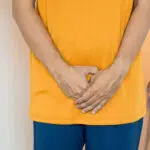- 4 August 2025
- Mr. Leon Almashan
Last updated on September 4, 2025
Peyronie’s disease is a condition where scar tissue (or plaque) forms beneath the skin of the penis, causing curvature, shortening, or discomfort during erections. This can affect sexual function and quality of life, particularly when left untreated.
Fortunately, there are a number of non-surgical options available that aim to reduce curvature, support tissue health and improve penile shape. Among the most widely used medical devices for Peyronie’s disease are penile pumps (vacuum therapy devices) and traction devices (penile traction therapy tools). Each works differently and offers distinct benefits depending on the stage and severity of the condition.
At MansMatters, both devices are used as part of a specialist-led, non-invasive approach tailored to your individual needs and goals. In this latest blog, we explore how each device works, when they’re most effective and why choosing the right solution starts with understanding your condition.
Table of Contents
ToggleWhat Are Penile Pumps?
Penile pumps, also known as vacuum erection devices, are mechanical tools that create a vacuum around the penis. This draws blood into the erectile tissue, supporting temporary rigidity and stretch.
For men with Peyronie’s disease, these devices can be used to:
- Encourage blood flow and oxygenation to the penis
- Stretch the penile tissue gently over time
- Help preserve or improve erectile function
- Support tissue elasticity during the healing process
Penile pumps are especially useful in the early inflammatory phase of Peyronie’s or after surgery to support rehabilitation. However, they’re not specifically designed to correct curvature. Their primary purpose is to improve function rather than structure.
What Are Traction Devices?
Traction devices use sustained, gentle mechanical force to stretch the penis over time. This process, known as penile traction therapy, is one of several non-surgical approaches shown to support structural improvement in Peyronie’s disease, particularly when curvature or shortening is present.
These devices are typically worn for one hour a day over weeks or months and have been shown to:
- Gradually correct curvature
- Help preserve or restore length
- Improve the overall appearance of the penis
- Support structural changes by remodelling scar tissue
Traction therapy is particularly effective during the stable and acute phase of Peyronie’s, when curvature has stopped progressing. They are better in the acute phase because the fibrous tissue has not yet fully formulated. Some men also use it alongside other treatments, such as Focused Shockwave Therapy, as part of a multi-modal treatment plan. At MansMatters, we offer access to high-quality traction devices and guide clients through proper use, adjustment and progress tracking.
Penile Pumps vs Traction Devices: Key Differences
| Feature | Penile Pumps | Traction Devices |
|---|---|---|
| Purpose | Erection support, tissue health | Curvature correction, length restoration |
| Mechanism | Vacuum draws blood into penis | Gentle sustained stretch to the tissue |
| Best For | Erectile dysfunction, rehab and general penile health | Curvature, shortening, plaque remodelling |
| Usage | Daily sessions (10 mins) | Long wear (1 hour/day) |
| Results Timeline | Immediate but temporary | Gradual structural improvement |
| Evidence for Curvature Correction | Modest | Stronger clinical support |
Both are medical devices used for Peyronie’s disease, but they serve complimentary roles. Penile pumps help manage the functional impact, while traction devices target the physical shape of the penis.
Which Is Best for You?
The right device depends on your symptoms, goals and the stage of the condition.
- If your main concern is erectile function, a penile pump may help maintain rigidity and promote vascular health.
- If you’re looking to correct curvature or improve lost length, a traction device is more likely to offer structural benefit.
- In many cases, a combined approach delivers the best results — using pumps for erection support and traction for long-term correction.
That’s why it’s important to seek professional advice before starting treatment. At MansMatters, we assess each case individually and can recommend the right tools, techniques and timeframe based on your unique situation.
How MansMatters Supports You
MansMatters is Europe’s leading non-surgical men’s health clinic, specialising in Peyronie’s disease, erectile dysfunction and related conditions. We provide:
- Access to medically approved traction devices
- Penile pump options suited to Peyronie’s management
- Guidance on correct usage, safety and monitoring
- Multi-modal treatment plans combining devices with technologies like Focused Shockwave Therapy
Our approach is centred around medical outcomes, not guesswork or gimmicks. With over 6,000 successful treatments and direct access to professionals, we’re committed to helping men find lasting, non-invasive solutions.
Final Thoughts
Both penile pumps and traction devices offer value in managing Peyronie’s disease, supporting different aspects of treatment depending on your stage and symptoms. Pumps are often used to improve blood flow and preserve function, while traction devices are designed to reduce curvature and restore length over time.
At MansMatters, we provide access to both as part of a non-surgical, multi-modal approach tailored to your needs. If you’re looking for a proven, non-invasive solution to Peyronie’s disease, get in touch with our team to find out what’s right for you.
FAQs
What is the best device for Peyronie’s disease?
There’s no one-size-fits-all answer. The best device depends on your symptoms and goals — traction devices target curvature, while pumps support erectile function.
Does traction therapy work for Peyronie’s?
Yes — clinical studies support traction therapy as an effective non-surgical option for reducing penile curvature and restoring lost length over time.
Will a vacuum pump help Peyronie’s disease?
A vacuum pump can improve blood flow and support erectile function. While it may not reverse curvature, it plays a valuable role in overall symptom management.
Do traction devices increase girth?
Traction devices are primarily designed to reduce curvature and improve length. While minor changes in girth may occur, this is not their primary purpose.
Can you use a penile pump and a traction device at the same time?
Yes — many men benefit from using both devices as part of a broader treatment plan. Pumps support function, while traction targets structural changes.
Do penile pumps correct curvature in Peyronie’s disease?
Penile pumps may offer mild improvements in curvature but are primarily used to support blood flow and erectile function. They’re not designed for structural correction.
Is traction therapy safe to use at home?
Yes — when used as directed, traction devices are safe for home use. At MansMatters, clients receive full guidance and support on safe and effective usage.
How soon can you expect results with a traction device?
Visible changes often take several weeks to months. Gradual progress is expected and consistency is key to achieving meaningful improvement.
Are these devices effective in all stages of Peyronie’s disease?
Pumps may be more useful in early or active stages, while traction tends to be most effective once the condition has stabilised. A personalised assessment is essential.
Can these devices be used alongside other treatments?
Absolutely. At MansMatters, they’re often combined with technologies like Focused Shockwave Therapy as part of a multi-modal, non-surgical plan.

About the Author
Mr. Leon Almashan
Mr. Almashan is a recognised specialist in advanced, non-surgical treatments for men’s health conditions, including Erectile Dysfunction and Peyronie’s Disease.
A graduate of St. George’s Medical School, he has developed innovative treatment protocols that have supported improved quality of life for 1000’s of patients worldwide.
Categories
Categories
- Erectile Dysfunction (13)
- Lifestyle (9)
- Mental Health (3)
- Other (3)
- Peyronie's Disease (4)
- Premature Ejaculation (2)
- Related medical conditions (3)







